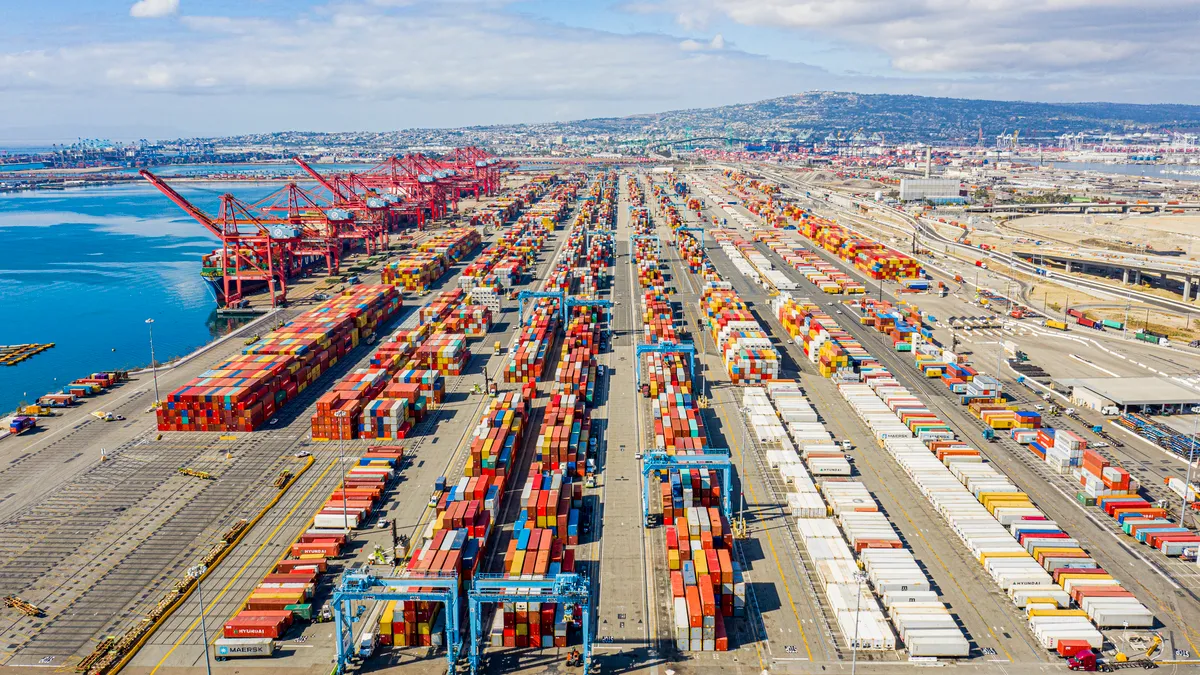Dive Brief:
- The Port of Long Beach contracted a technology firm, UNCOMN, to help it create a free cargo visibility software that gives shippers data to "track their cargo through the complete supply chain," according to a press release.
- The Supply Chain Information Highway, as the port calls the software, will allow stakeholders to securely access and analyze available data. Integrating systems this way should help improve in-transit visibility, port representatives said during a Thursday media briefing.
- The port spent $400,000 to "demonstrate a proof of concept" in February 2022, said Noel Hacegaba, deputy executive director at the Port of Long Beach, during the media briefing. Once the prototype is complete, the port intends to share the tool with other ports, starting with the Port of Oakland.
Dive Insight:
Lack of visibility and data transparency is one of the most common problems the Port of Long Beach hears from its stakeholders, according to port representatives.
The lack of visibility in "blank sailings was glaring, and the rapid shift to a record number of extra loaders caught the supply chain off guard," Hacegaba said.
"Information is not making its way across the supply chain," he said.
The way data is shared today is limited. Supply chain parties often don't communicate in a uniform or standardized way, which slows cargo movement. Several groups have been working to improve data sharing, such as the Federal Maritime Commission, with a new data transparency initiative, and the Digital Container Shipping Association, which published just-in-time standards for the main parts of port calls.
"It seems the fragmented structure of the supply chain has also fragmented the flow of data," Hacegaba said.
The Port of Long Beach has an existing operations dashboard called Weekly Advance Volume Estimate, or WAVE. It provides information on vessels, containers and gate turn times. In comparison, The Port of Los Angeles has Port Optimizer, which provides container moves, status changes, asset management and more.
The intention is not to compete but to to be "complementary and not to reinvent the wheel, not to replicate what's already in the marketplace," Hacegaba said.
For that reason, the Port of Long Beach executives concluded the best solution was a platform that securely curated and published data, but let users analyze it with their own systems, said Mario Cordero, executive director at the Port of Long Beach, in the briefing. The plan is to scale up and share the tool with additional seaports.
One of the main goals is to gather data on each movement in the supply chain.
"We're going to track it as far back as import origin all the way to the last mile and perhaps even beyond that provision," Hacegaba said.
Edwin Lopez contributed to this story.















